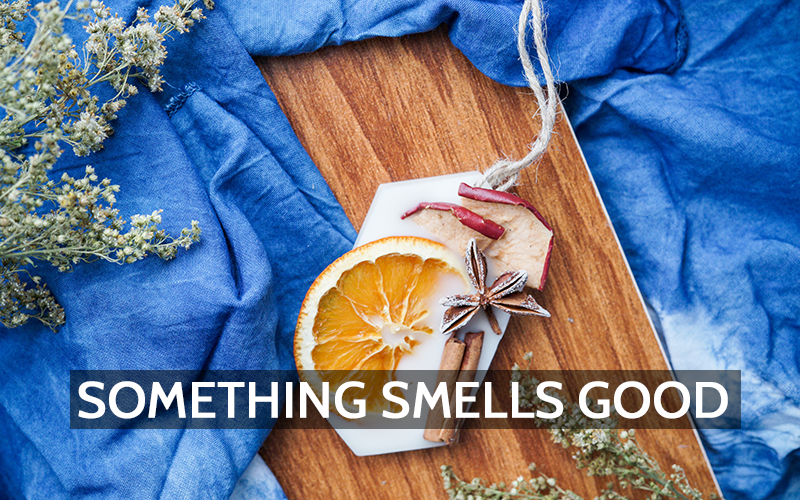Christmas is a season celebrated with not only vibrant decorations and cherished traditions but also an unmistakable array of delightful aromas. From the invigorating scent of fresh pine to the comforting warmth of hot cocoa, the chemical compounds behind these smells hold both scientific intrigue and emotional resonance. Understanding these aromas—and the chemistry that creates them—can deepen our appreciation of the holiday season.
The Chemistry of Fresh Pine
A fresh Christmas tree often serves as the olfactory centerpiece of holiday decor. The unmistakable scent of pine is primarily due to organic compounds called terpenes, particularly alpha-pinene and beta-pinene. These volatile molecules are released from the resin of conifer trees and are responsible for their characteristic evergreen aroma. Alpha-pinene has been studied for its mood-lifting properties, making it a fitting choice for creating a joyful holiday atmosphere. Many artificial Christmas tree sprays and candles replicate this scent by incorporating synthetic versions of these terpenes.
Peppermint and the Magic of Menthol
Candy canes are a quintessential Christmas treat, and their iconic peppermint flavor owes its signature smell to menthol, a naturally occurring compound found in peppermint oil. Menthol interacts with cold-sensitive receptors in the skin and mucous membranes, creating a cooling sensation that is as refreshing as it is aromatic. This chemical property not only contributes to the festive cheer of peppermint but also enhances its use in seasonal products such as candles, teas, and desserts.
The Spiced Symphony of Mulled Wine and Cider
Warm, spiced beverages like mulled wine and cider are staples of holiday gatherings. Their complex aromas stem from a blend of spices such as cinnamon, cloves, and nutmeg. Cinnamaldehyde, the compound responsible for cinnamon’s distinctive scent, dominates this aromatic profile. Similarly, eugenol from cloves and safrole from nutmeg contribute rich, warm notes that evoke nostalgia. These spices are often paired with citrus fruits, whose essential oils, including limonene, add a bright, zesty contrast.
Hot Cocoa and the Chemistry of Comfort
Few scents evoke the cozy essence of Christmas quite like hot cocoa. The rich, chocolatey aroma comes from over 600 volatile compounds in cacao beans. Key contributors include pyrazines and aldehydes, which develop during the roasting process and give chocolate its nutty, roasted fragrance. Vanilla, often added to hot cocoa, enhances the complexity of the flavor profile with vanillin, a compound cherished for its creamy and sweet scent.
Gingerbread and the Maillard Reaction
Baking gingerbread cookies fills the home with an inviting, festive aroma. This smell results from the Maillard reaction, a chemical process that occurs when proteins and sugars in the dough are heated, producing a cascade of aromatic compounds. Key spices in gingerbread, such as gingerol in ginger, contribute to its signature warmth and spiciness. Additional ingredients like molasses and brown sugar caramelize during baking, enhancing the rich, sweet scent.
The Earthy Notes of Chestnuts Roasting
Roasting chestnuts over an open fire, a tradition immortalized in Christmas songs, releases earthy and nutty aromas. This scent arises from a combination of caramelization and the Maillard reaction. During roasting, chestnuts’ natural sugars and amino acids interact, creating compounds like pyrazines and furans that produce their toasty fragrance.
Frankincense and Myrrh: Aromatics of Antiquity
The biblical gifts of frankincense and myrrh bring a historical and spiritual dimension to Christmas aromas. Frankincense’s scent is derived from boswellic acids and other terpenes found in the resin of Boswellia trees. Myrrh, sourced from Commiphora trees, contains sesquiterpenes and furanosesquiterpenoids, which contribute to its warm, balsamic fragrance. Together, these ancient resins add a sacred and mystical quality to the holiday season.
The Science Behind Scent and Emotion
The power of Christmas aromas lies in their ability to evoke emotions and memories. This phenomenon is rooted in the brain’s limbic system, where the olfactory bulb directly connects to regions involved in memory and emotion. Scents like pine, peppermint, and cocoa often transport people back to cherished childhood moments or evoke feelings of comfort and joy.
From the bright freshness of peppermint to the warm spice of mulled cider, the aromas of Christmas are a sensory celebration underpinned by fascinating chemistry. These scents not only enhance the festive atmosphere but also create lasting emotional connections to the holiday season. By understanding the compounds behind these familiar fragrances, we can appreciate the science that makes Christmas such a delightfully aromatic time of year.
Happy Holiday’s from the AirQuality.News team and we hope you have a prosperous 2025!
Related Article:
The Chemistry Behind Thanksgiving Aromas
References:


